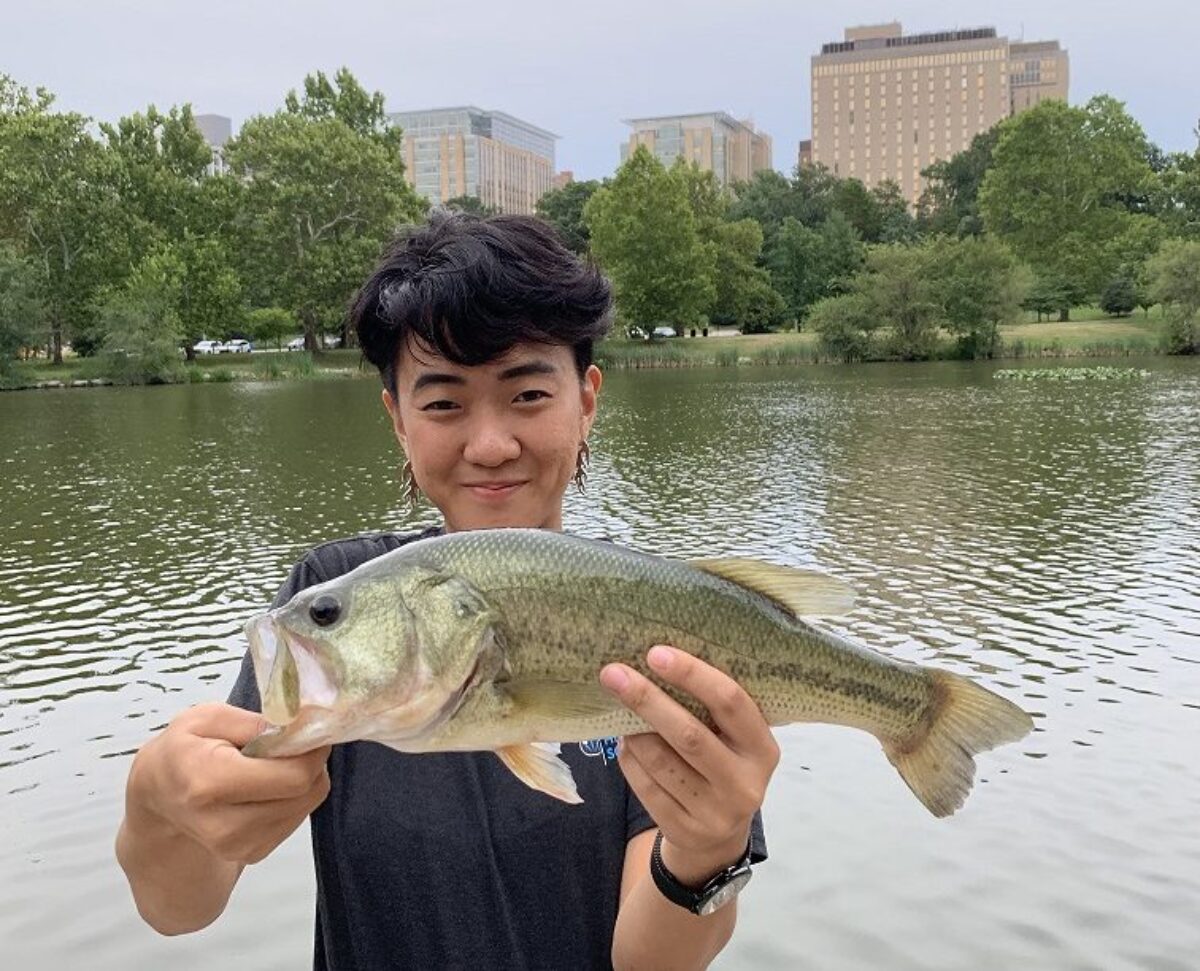The following interview took place prior to the protests over the killing of George Floyd.
Rachel Youn was “in the final stretch” of preparation for their Great Rivers Biennial (GRB) exhibition, slated for May 8. “This was the first time I worked on a project for weeks and months,” they tell me. “I was set to finish on time, which is amazing for me. I knew the show would open and the install would be intense. Then there would be the artist talk. And then I’d drive.”
When Youn wasn’t in their studio transforming hand massagers, plastic plants, and stereo cabinets into a raucous, immersive installation of objects dancing to church song and hip-hop, they were at their “adult job” for Washington University in St. Louis, recruiting promising art students to the Sam Fox School of Design & Visual Arts, from which Youn received their BFA in 2017. “I’ve only taken a few days off from work for install or residencies, but I’ve never taken time to just vacation.”
A pandemic is not ideal for road trips, however. Instead, Youn has given themself time to be unproductive, which hasn’t been an easy transition. “It’s taken me a while to say that not working in the studio is OK. For years I felt guilty if I was not constantly in a mode of production. I always went to the studio or did research. Now, things feel much more important and urgent in the world outside the studio. I realize I make art when I’m happy and feel content—and I don’t feel that way right now.”
We talk about the popular romantic idea of the discontented artist, which can be distilled to “van Gogh with his ear cut off.” Youn says in their recruitment position they “review a lot of high school art and a lot of it is about relieving anguish and angst.” For Youn, the discovery that art did not have to be “about my troubles,” during their own teen years, was a revelation and a reassurance.
Yet Youn’s upcoming GRB installation, Gather, isn’t without personal reflection. Youn assembles objects found on Facebook Marketplace and Etsy and situates them in a kinetic dance. The handheld electric massagers and stereo speakers no longer serve their designed purpose, which lends a degree of pathos to the installation. Church music and popular hits heard in safe queer dance spaces represent two conflicts within the artist’s awkward passage toward maturity, and within the installation create a musical backdrop of reconciliation.
Youn’s path toward the making of Gather included meetings with strangers. “Before COVID I had really pleasant social interactions with the people I bought from. I’d drive all over the St. Louis area and into the suburbs. A lot of the people I’ve met are lovely and they just want someone to chat with. I hear stories about the objects themselves. They tell me this massager is so comfortable and they’re selling it because they’ve moved up to a massage chair. These speaker cabinets come from the ’70s and ’80s—they’re selling them for their parents or their father passed away, or Mom went into assisted living. It all speaks to the burden of stuff, but also attaches some sentiment to these objects.” Not all those sentiments are tinged with nostalgia, though. “There’s also the weird connotations of meeting people who rubbed these things on their bodies,” Youn admits.
In the realm of unproductiveness, Youn has also taken up fishing. “It’s Ryan’s fault,” Youn credits their partner, artist and CAM installer Ryan Doyle. “At first I would watch Ryan fish. Then I bought my first rod and reel at Bass Pro Shops in St. Charles. I took it out to Forest Park and caught my first bass. Before I’d only caught bluegill on a bobber. We get off work and go to Jefferson Lake and just fish. I’ve had great beginner’s luck and some days catch more fish than Ryan. I release all the fish I catch.
“It’s one thing I do that feels quintessentially American,” Youn remarks. They have also learned the nomenclature of the sport: “When people describe the size and shape of a fish, they’ll compare it to something else entirely, like a horse, a toad, or a football.”
—Eddie Silva
